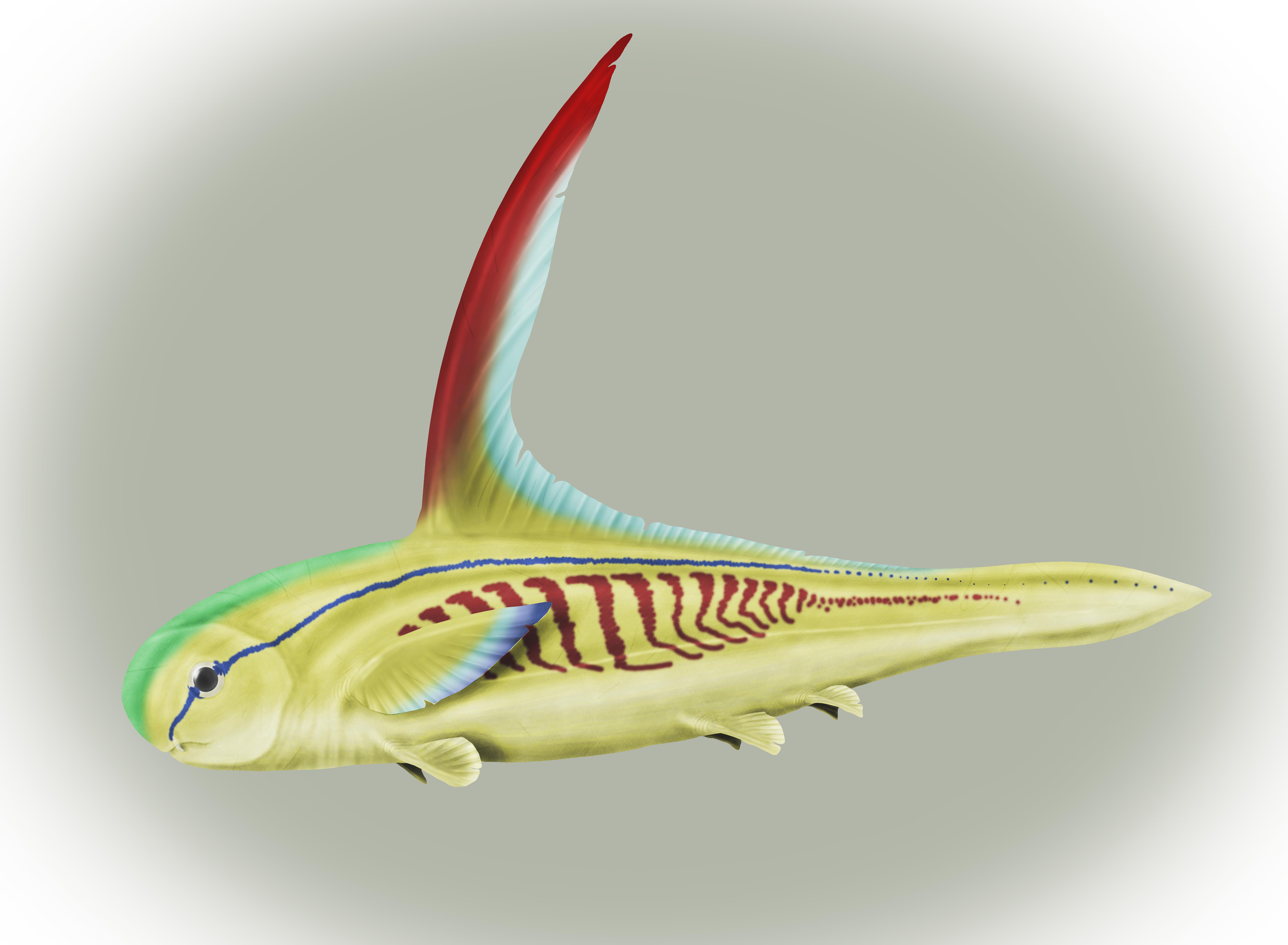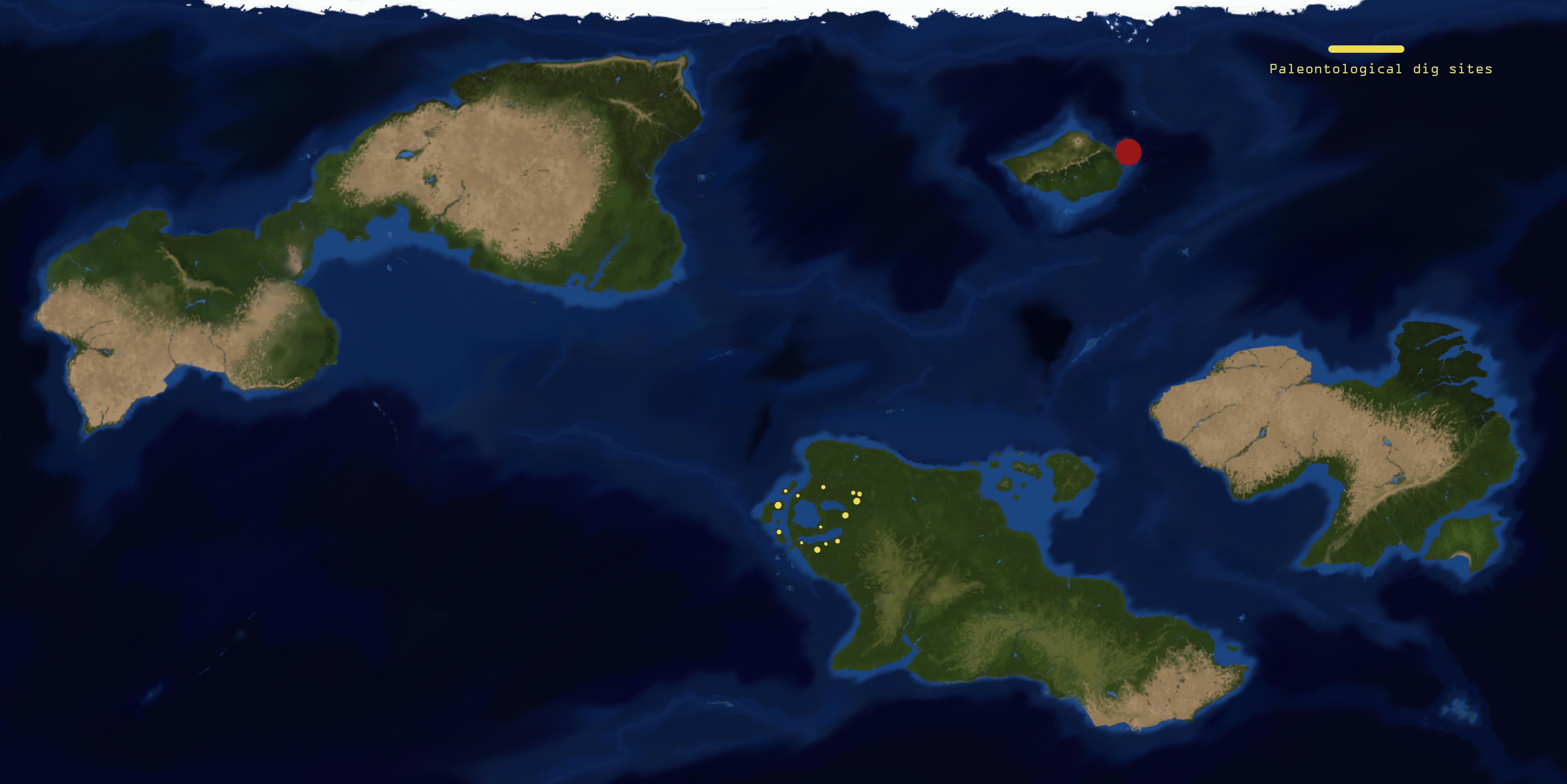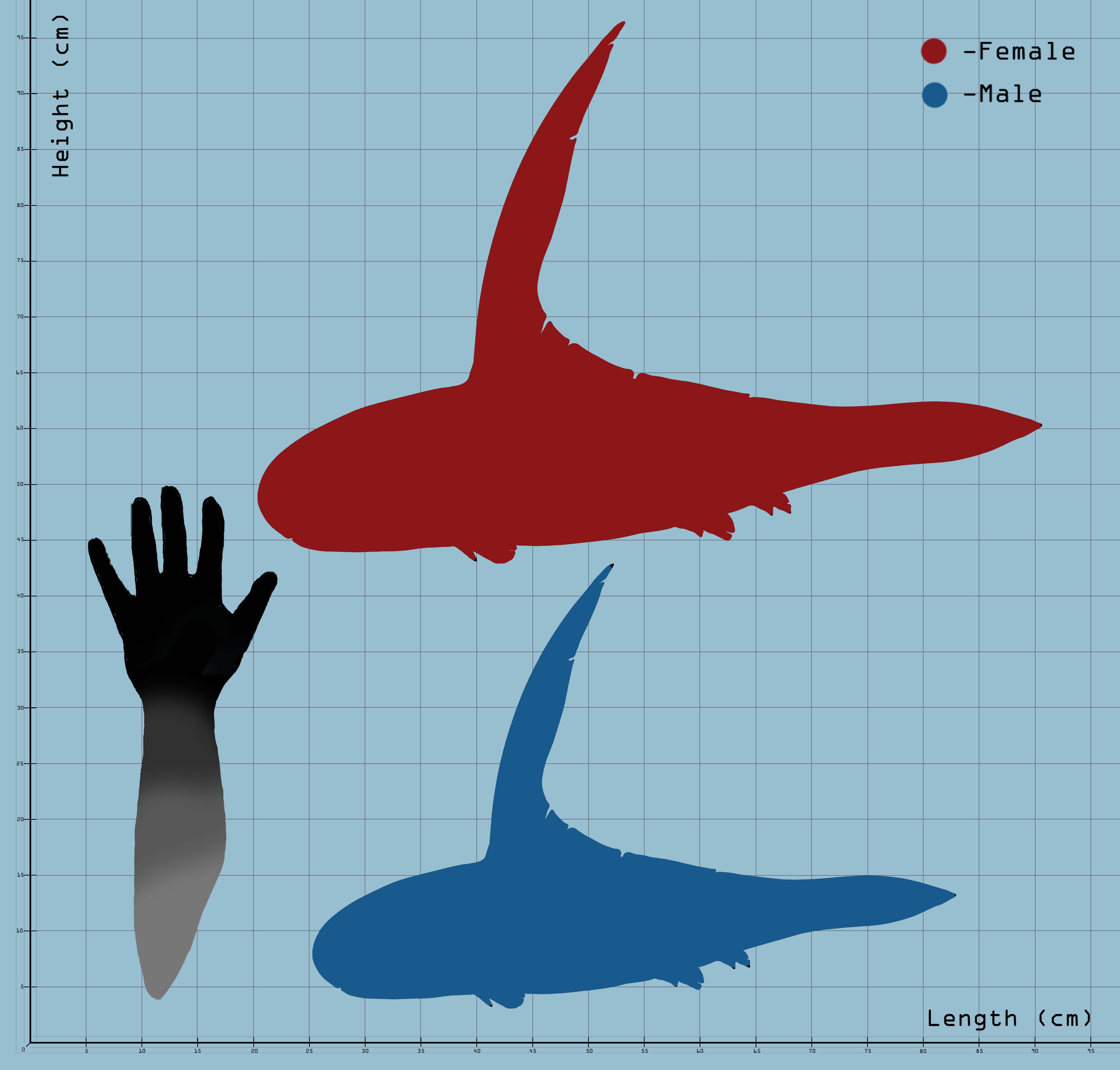Rainbow Cutterfin
Aryabhatia dorsoscalpelli is a Landmark species of Citrine Quadratocephaloid amphibian from The Crater.
The species was first Discovered by Paleontologist Aryabhata Lubberts in sediments dating back 25 million years of the south coast of the Phantom Sea, in what was at the time the Magna Sinus, the large bay that's now closed off from the ocean in the interior seas.
In the year 2538, one of the first expeditions into The Crater's Ring Peak zones discovered some living specimens, almost halfway through their historical habitat, in the opposite hemisphere and completely unchanged in 25 million years.
The animal lives on the sandy seafloor of The Crater, using the down pointed mouth and rounded head to search under the sand for food such as seeds or soft-bodied invertebrates.
It finds shelter from predators under rocks or other hard objects, usually retracting the dorsal fin to be less conspicuous and using the colour of the body to camouflage against the sand he lies upon.
The animal can partially burrow in the sand by digging with the small anal fins.
Mostly active during the day, the animal lives in small, mix-gendered communities, foraging together during the hottest hours of the day and resting when it gets colder, usually staying very close one another to keep warm and groom.
The species communicate with small intermittent chirps and the movement of the dorsal fin, which can bend at the halfway point, having the Femur unfused from the Tibio-fibular bone, a characteristic rather unique of the species.
This baso-citrine selenopiscoid is very popular in the pet trade, especially among Paleontology enthusiasts, given the nature of the animal itself and how relatively easy it is to keep.
The Deshivohai allow for a limited export of the species from its natural habitat.
Basic Information
Anatomy
- Head rounded, mouth small and slightly angled downward.
- Eye large compared to the body.
- Body long and low.
- Dorsal fin very high and pointed, going down to the midpoint of the Gill Tail, able to fold on itself.
- Anal I, II & III fins small and rounded.
- Pectoral fins large and leaf shaped.
- Gill Fan very low and long, caudal drop very smooth.
Genetics and Reproduction
Promiscuous species.
A. dorsoscalpelli mates intermittently all year long.
Males enter an active state for a week, signalling their state with the swelling of the parapenis, which will remain exposed for the whole duration of this state, kept on one side of the animal to avoid it hiding the sandy floor and with a sudden brightening of the skin and eyes.
Females will also remain in an active state for a week, signalling their receptiveness through the fast vibration of the dorsal fin and the brightening of the duct entrance.
Males won't fight over mating rights as the only deciding factor in mate selection is the female, which will personally select mates based on the colour of skin, eyes and parapenis.
The mating process is very quick and a female can hold the seed of many males at once to create mixed offspring.
The eggs are incubated inside the duct for a few hours, the female will lay around seventy to one hundred eggs in small nests it digs in the sand.
The eggs will hatch a week later and the hatchling will have to survive on their own.
Growth Rate & Stages
Ontogenesis in the species very marked.
Hatchlings will have a more rounded body and will have a more planktonic lifestyle, getting transported by the currents and feeding on Phytoplankton and other microbial nutrients free in the water.
The Dorsal fin in this stage will be rectangular in shape, similar to a sail.
While growing they'll gradually move to a benthic lifestyle.
Loss of natal aculeus one to two hours after birth.
Ecology and Habitats
Epipelagic species found at depths between 3 and 30 m.
It lives among the sandy dunes in areas with fine sediment and low hydrodynamism.
Dietary Needs and Habits
Bottom feeder eating algae, seeds, soft-bodied invertebrates and small enough scraps of food it can fit in its mouth.
Biological Cycle
Periannial species with no dips in activity year-long.
Additional Information
Social Structure
Social animal living in small communities.
It forages in small groups and rests in communal spaces where different parties converge.
While resting they communicate through chirps and fast movements of the dorsal fin.
Domestication
Popular among Paleontology enthusiasts and private collectors alike, the species has been exported over the years worldwide, although extraction from the wild is highly regulated by the Deshivohai to avoid overharvesting of the species.
Although still few, some breeders have started appearing on the market, offering the first prototypes for some morphs such as the White Sand and the Dorsal Blast.
Reccomended even to beginners, however the price of specimens can vary wildly depending on their origin and colouration, which might make it a demanding first investment.
Uses, Products & Exploitation
Of importance locacally among the communities of the western shores of Glean Blathànna as one of the many species that attract tourists to the area annually.
Of global importance in the pet trade for its origin and colouration.
Geographic Origin and Distribution
Perception and Sensory Capabilities
Very good colour eyesight and chemiolocatory abilities.
Symbiotic and Parasitic organisms
Afflicted by few skin diseases, sometimes cleans the skin of bigger amphibians from parasites.
Scientific Name
Eoichthyia; Tartarosomnia; Rotunducephalidae; Gladiopinneioidea; Quadratocephaloidea; Selenopiscoidea ; Cuspinninidae; Citrinae; Aryabhatia; A. dorsoscalpelli
Lifespan
6 Years
Conservation Status
Allochronous: The animal is a Landmark species, it defies regular census techniques.
Population Trend: UNKNOWN
Average Weight
400 gr to 5 kg
Body Tint, Colouring and Marking
Sand coloured body with a slightly lighter countershading.
Green band over the head to the base of the dorsal fin.
Dorsal fin tipped in red on the frontal section, bordered in azure along the rest of the body.
Pectoral fin tipped in azure smoothening into a dark blue towards the edges.
Single blue band going over the head to the tail, eye banded.
Ruddy to red patterning over the body.
Remove these ads. Join the Worldbuilders Guild












Comments